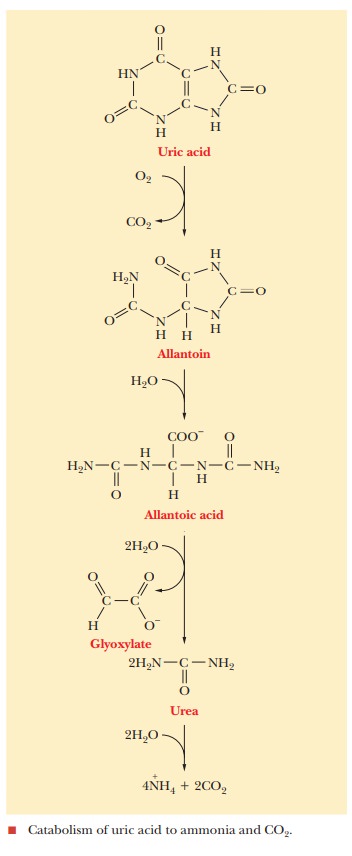Chapter: Biochemistry: The Metabolism of Nitrogen
Water and the Disposal of Nitrogen Wastes
Water and the
Disposal of Nitrogen Wastes
Ammonia gas is toxic to most organisms and must usually be disposed
of rapidly. In a certain sense, one can almost guess the mechanism of
nitrogen-waste disposal if one knows the amount of water available to the
organism in question. For example, bacteria and fish, which live in “infinite”
water supplies, usually simply release ammonia into the medium, where organisms
that are lower on the evolutionary scale can use it. Fish sometimes produce
trimethylamine, another highly water-soluble compound, which is the
characteristic “fish odor.” Most terrestrial animals do not have “infinite”
water supplies, but mammals, which have bladders, usually live in conditions
where adequate water is available. Their mechanism for disposal of most toxins
is to prepare a water-soluble compound and then to excrete it through the
urine. Thus, urea becomes a major by-product of nitrogen metabolism in mammals.
Reptiles and other desert animals do not usually have much water
available, and birds cannot afford to carry the weight of a fluid-filled
bladder.
These animals do not make urea; rather, they convert all their
waste nitrogen to uric acid (Figure 23.17), the concentrated white solid so
familiar in bird droppings. Some desert mammals, such as the kangaroo rat,
which never drinks water but rather lives off metabolic water, also convert
some of their waste nitrogen to uric acid to conserve the water used in urine.

Uric acid, the typical waste product from purines, can cause
problems in primates due to its marginal water solubility. Deposits of uric
acid in the joints and extremities cause gout. Other mammals do not have a
problem with uric acid because they convert it to allantoin, which is very
water-soluble.


Related Topics